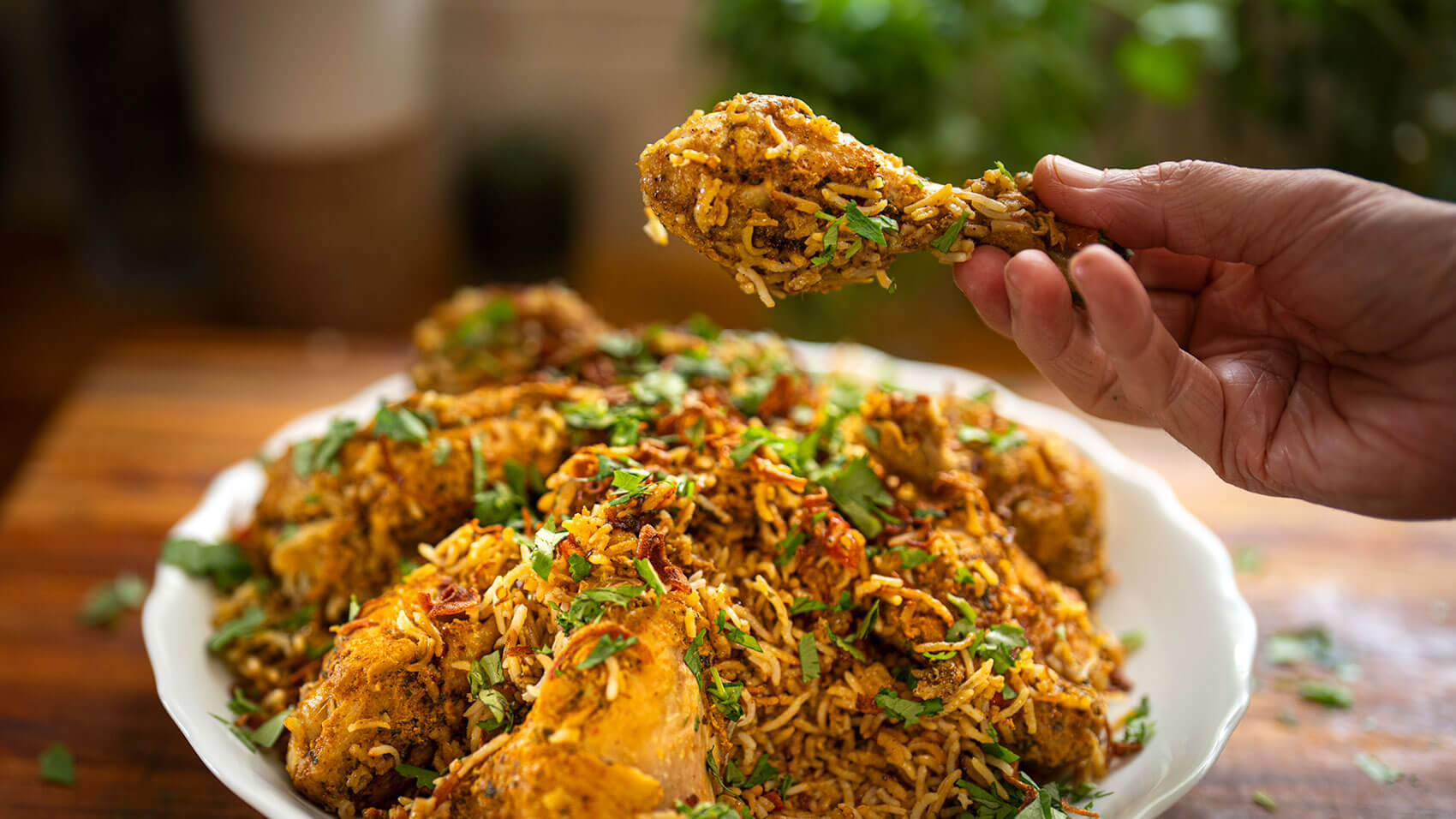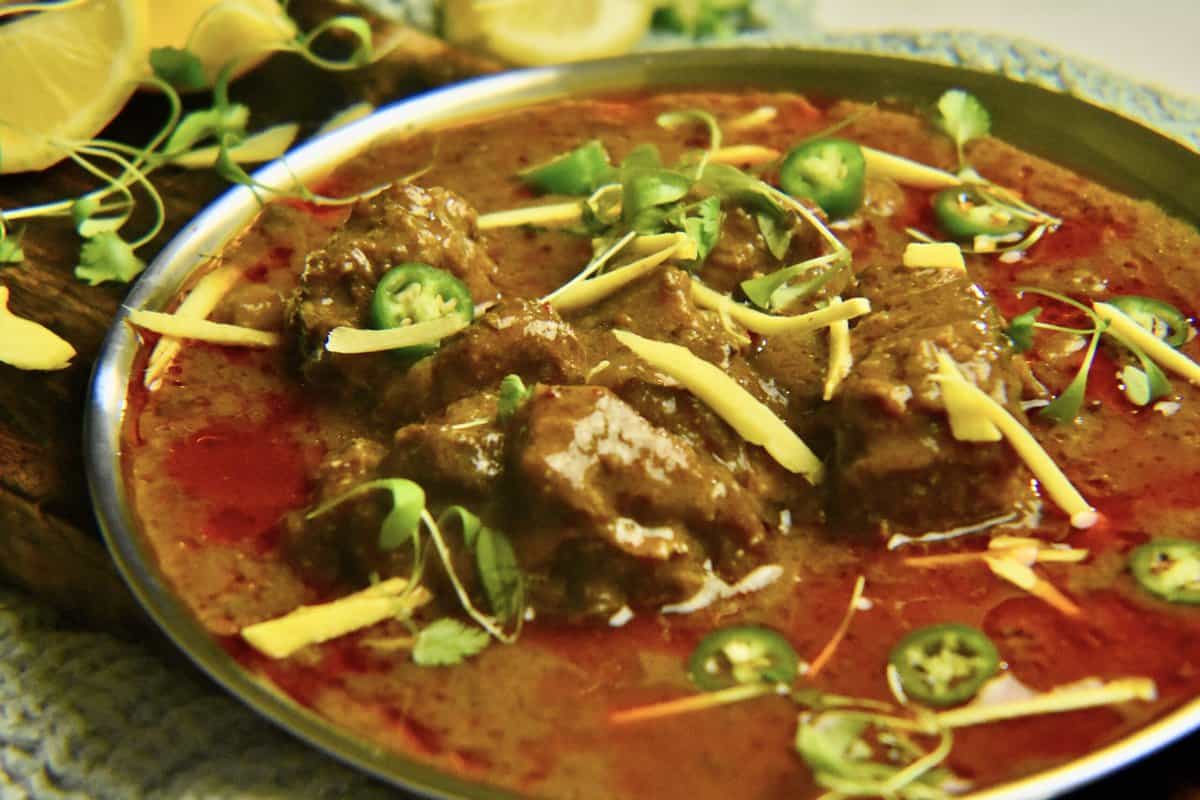Introduction
Karachi stands tall not just as Pakistan’s vibrant and bustling metropolis but also as a melting pot of flavors and culinary traditions. Nestled along the Arabian Sea, this city isn’t just about its soaring skyline; it’s a culinary haven where aromas waft through its streets, tantalizing taste buds and inviting exploration. The food in Karachi is more than sustenance; it’s a cultural identity woven into the fabric of everyday life, resonating through markets, homes, and bustling eateries.
The blog aims to unravel the layers of Karachi’s food culture, inviting readers on a delectable journey through its streets and kitchens. From the aroma of spices infusing the air to the sizzle of street-side grills, Karachi’s food scene is a treasure trove of diversity, showcasing influences from various regions and cultures. The significance of food in Karachi goes beyond mere sustenance; it’s a storyteller, narrating tales of heritage, migration, and fusion. Through this exploration, we delve into the heart of Karachi’s culinary identity, offering a glimpse into its rich tapestry of flavors and traditions.
As we venture into this culinary voyage, we’ll uncover not just the must-try dishes but also the cultural nuances, the historical threads, and the significance of food in shaping Karachi’s identity. Join us in celebrating the vibrant and soul-stirring essence of “food in Karachi,” where every bite is a narrative and every dish, is a piece of cultural heritage.
List of 30 Top Food in Karachi
| S. No | Name of Food/Dish | Category | Price Range (USD & EUR) | Main Ingredients (if available) |
|---|---|---|---|---|
| 1 | Biryani | Savory | $5-$15 USD, €4-€12 EUR | Rice, Meat, Spices |
| 2 | Nihari | Meat Dish | $6-$12 USD, €5-€10 EUR | Slow-cooked Meat, Spices, Wheat Flour |
| 3 | Haleem | Savory | $4-$10 USD, €3-€8 EUR | Wheat, Meat, Lentils, Spices |
| 4 | Seekh Kebabs | Meat Dish | $3-$8 USD, €2-€7 EUR | Minced Meat, Spices |
| 5 | Chicken Karahi | Meat Dish | $6-$12 USD, €5-€10 EUR | Chicken, Tomatoes, Spices |
| 6 | Chapli Kebab | Meat Dish | $5-$10 USD, €4-€8 EUR | Minced Meat, Spices, Tomatoes, Onions |
| 7 | Gol Gappay | Savory | $2-$5 USD, €2-€4 EUR | Flour, Potatoes, Chickpeas, Tangy Water |
| 8 | Paaye | Meat Dish | $5-$12 USD, €4-€10 EUR | Trotters, Spices, Herbs |
| 9 | Paratha Rolls | Savory | $3-$7 USD, €2-€6 EUR | Flatbread, Spicy Fillings |
| 10 | Bun Kabab | Savory | $1-$3 USD, €1-€2 EUR | Burger Bun, Spicy Patty, Chutney |
| 11 | Sindhi Biryani | Savory | $5-$15 USD, €4-€12 EUR | Rice, Meat, Potatoes, Spices |
| 12 | Dahi Baray | Savory | $2-$6 USD, €2-€5 EUR | Lentil Balls, Yogurt, Tamarind Chutney |
| 13 | Aloo Bukhara Chutney | Savory | $2-$4 USD, €2-€3 EUR | Plums, Sugar, Spices |
| 14 | Samosas | Savory | $1-$4 USD, €1-€3 EUR | Pastry, Potatoes, Peas, Spices |
| 15 | Kebab Paratha | Savory | $3-$8 USD, €2-€7 EUR | Flatbread, Spicy Kebabs |
| 16 | Paya Curry | Meat Dish | $6-$12 USD, €5-€10 EUR | Trotters, Spices, Herbs |
| 17 | Daal Chawal | Savory | $3-$7 USD, €2-€6 EUR | Lentils, Rice, Spices |
| 18 | Chicken Handi | Meat Dish | $6-$12 USD, €5-€10 EUR | Chicken, Cream, Spices |
| 19 | Qeema | Meat Dish | $4-$10 USD, €3-€8 EUR | Minced Meat, Spices, Peas |
| 20 | Tandoori Naan | Savory | $1-$3 USD, €1-€2 EUR | Oven-baked Bread |
| 21 | Karachi Street Food | Mixed varieties | $1-$10 USD, €1-€8 EUR | Varied - Varies with dishes |
| 22 | Chicken Tikkas | Meat Dish | $4-$8 USD, €3-€7 EUR | Marinated Chicken Pieces, Spices |
| 23 | Fish Fry | Seafood | $5-$15 USD, €4-€12 EUR | Fried Fish, Spices |
| 24 | Chana Chaat | Savory | $2-$5 USD, €2-€4 EUR | Chickpeas, Potatoes, Spices, Chutneys |
| 25 | Aloo Chaat | Savory | $2-$5 USD, €2-€4 EUR | Potatoes, Spices, Chutneys |
| 26 | Malai Boti | Meat Dish | $5-$12 USD, €4-€10 EUR | Creamy Chicken Cubes, Spices |
| 27 | Chicken Boti | Meat Dish | $5-$10 USD, €4-€8 EUR | Marinated Chicken Chunks, Spices |
| 28 | Anda Paratha | Savory | $2-$6 USD, €2-€5 EUR | Flatbread, Egg, Spices |
| 29 | Gola Ganda | Sweet | $1-$4 USD, €1-€3 EUR | Shaved Ice, Syrups, Fruit Flavors |
| 30 | Khichdi | Savory | $3-$8 USD, €2-€7 EUR | Rice, Lentils, Spices |
| S. No | Name of Food/Dish | Category | Price Range (USD & EUR) | Main Ingredients (if available) |
Note: The price range provided is approximate and may vary depending on the restaurant or vendor.
Biryani: Biryani is a fragrant rice dish cooked with a blend of spices, meat (often chicken or mutton), and aromatic Basmati rice. Layered and slow-cooked with marinated meat, fried onions, and a medley of spices like saffron, cardamom, and bay leaves, it’s a symphony of flavors. The dish often includes yogurt, tomatoes, and fried potatoes, creating a rich and hearty meal, often served with raita (yogurt-based condiment).
Nihari: This slow-cooked stew boasts succulent pieces of meat, typically beef or mutton, simmered for hours with a mix of spices like cinnamon, cloves, cardamom, and nutmeg. The dish gains its rich, flavorful gravy from bone marrow, resulting in a silky texture and an aromatic taste. It’s traditionally served with naan bread or steamed rice, and garnished with ginger, green chilies, and lemon wedges.
Haleem: A wholesome and nourishing dish, Haleem is a thick stew made by slow-cooking wheat, barley, lentils, and minced meat (usually chicken or beef) together. The blend is infused with a melange of spices, creating a creamy, porridge-like texture. Garnished with fried onions, ginger, and fresh coriander, it’s a favorite during Ramadan and a beloved comfort food in Karachi.
Seekh Kebabs: These kebabs are crafted from minced meat (commonly beef, mutton, or chicken) mixed with various spices, onions, and fresh herbs. The mixture is molded onto skewers and grilled or barbecued to perfection. The resulting kebabs are juicy, smoky, and bursting with a savory blend of flavors, often accompanied by naan or paratha and chutneys.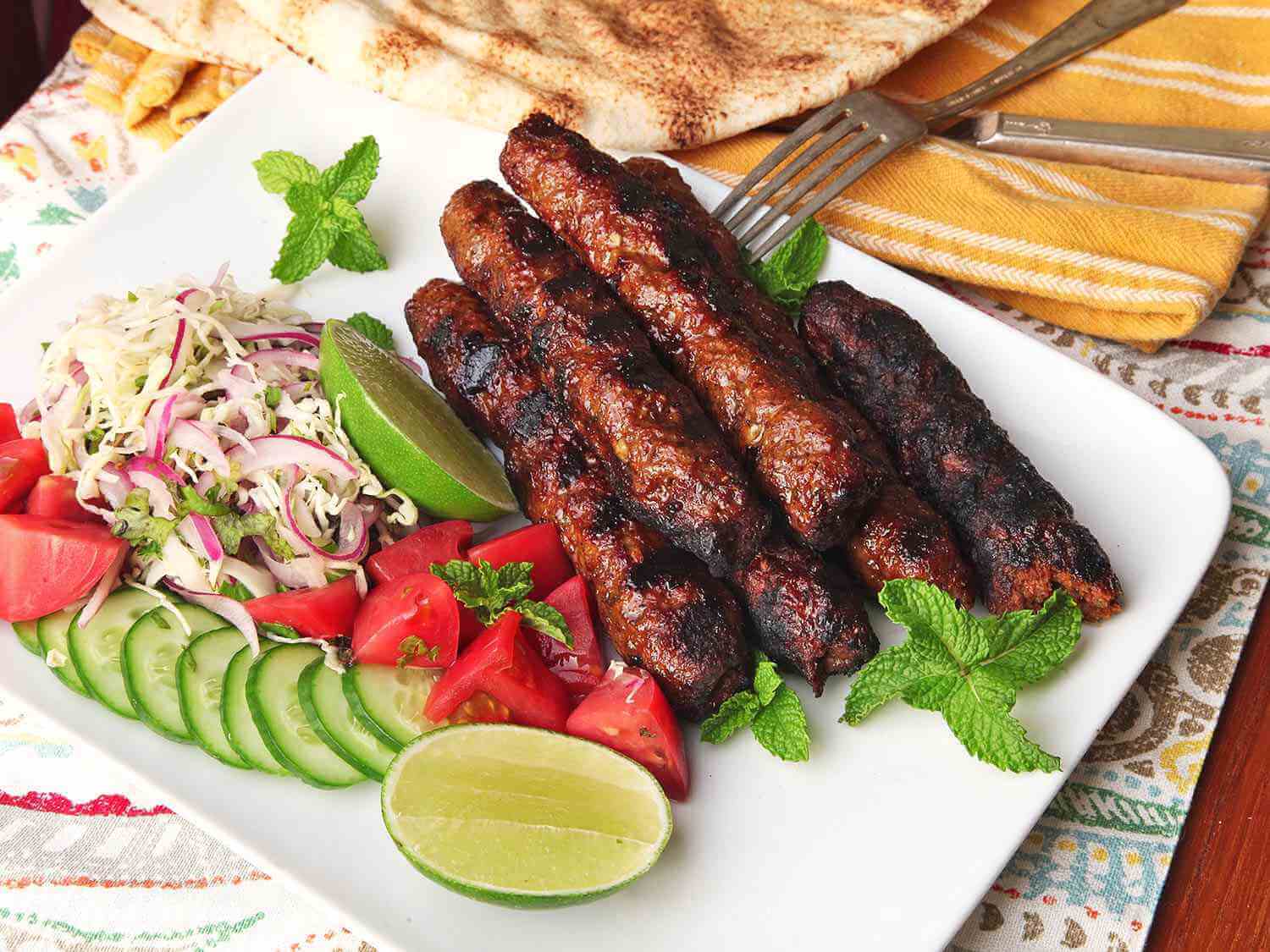
Chicken Karahi: Prepared in a wok-like cooking vessel called a “karahi,” this dish features succulent chicken pieces cooked with tomatoes, green chilies, garlic, and a blend of spices. The use of fresh ingredients and the unique cooking method in the karahi imparts a distinctive taste and tenderness to the dish. It’s often served with naan or tandoori roti.
Chapli Kebab: Originating from the Khyber Pakhtunkhwa province, these flattened, round-shaped kebabs are made from minced meat, typically beef or mutton, mixed with spices, tomatoes, onions, and coriander. Pan-fried until crispy on the outside and tender inside, they offer a delightful blend of flavors and textures.
Gol Gappay (Pani Puri): Gol Gappay, also known as Pani Puri, consists of hollow, crispy spheres filled with tangy tamarind water, chickpeas, potatoes, onions, and a spicy mixture, creating a burst of flavors in every bite. It’s a beloved street food snack, often consumed as a refreshing and zesty appetizer.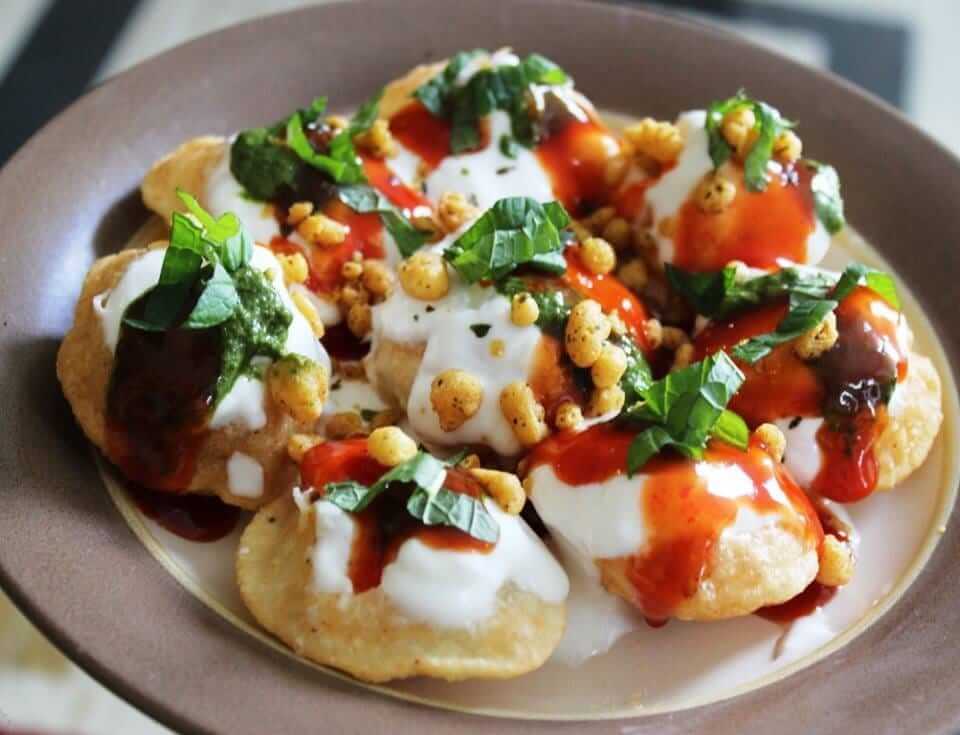
Paratha Rolls: These rolls feature flaky, layered parathas stuffed with various fillings such as spicy chicken, beef kebabs, or vegetables, along with chutneys and sauces. They’re a popular grab-and-go snack, perfect for a quick, satisfying meal on the move.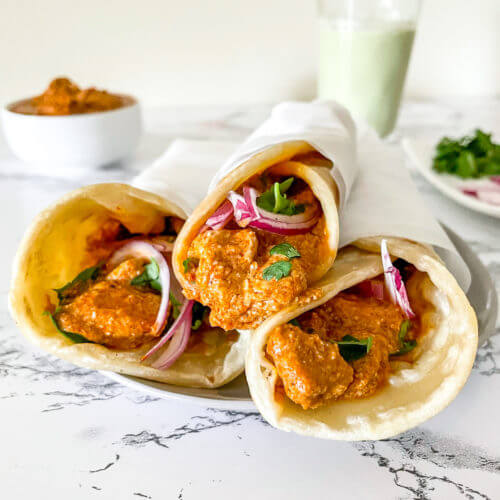
Bun Kabab: A simple yet flavorful dish, Bun Kabab comprises a spicy patty made from minced meat (often beef) seasoned with herbs and spices, served in a soft bun along with chutneys, onions, and sometimes a slice of tomato. It’s a beloved street food item, packed with savory goodness.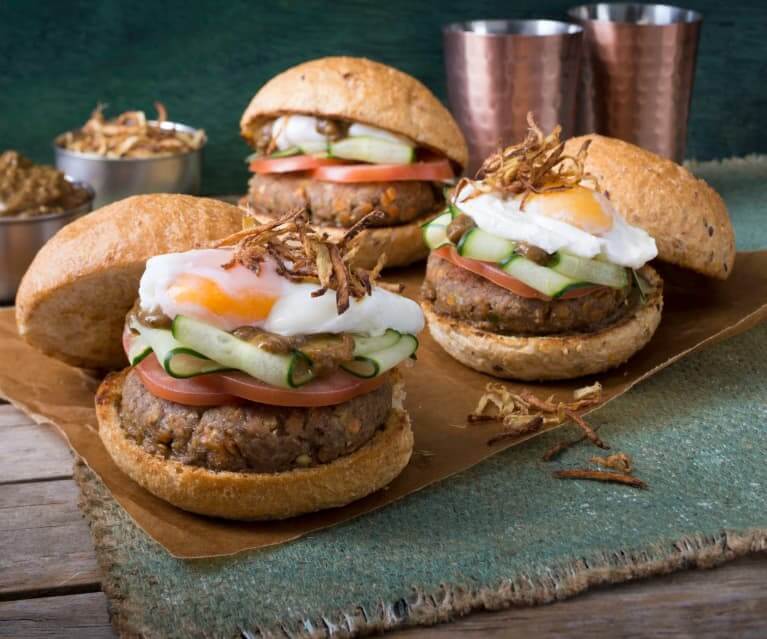
Sindhi Biryani: This variation of biryani from the Sindh region involves marinated meat, often chicken or beef, cooked with rice and a blend of spices, including saffron, cumin, and cloves. What sets it apart is the addition of potatoes and the unique spice mix, resulting in a distinct taste profile.
Dahi Baray: Dahi Baray consists of lentil or gram flour dumplings soaked in seasoned yogurt and topped with a tangy tamarind chutney, mint sauce, and a sprinkle of spices. The contrasting textures of the soft, spongy dumplings and the creamy yogurt create a refreshing and flavorful snack.
Aloo Bukhara Chutney: A sweet and tangy condiment made from dried plums (Aloo Bukhara), sugar, and spices, this chutney adds a delightful twist to various dishes. It’s a popular accompaniment in Pakistani cuisine, offering a balance of fruity, sour, and spicy flavors.
Samosas: These triangular pastries are filled with a mixture of spiced potatoes, peas, and sometimes minced meat, enclosed in a crispy, golden-brown crust. They’re a ubiquitous snack across Karachi, enjoyed as a savory treat often served with chutneys.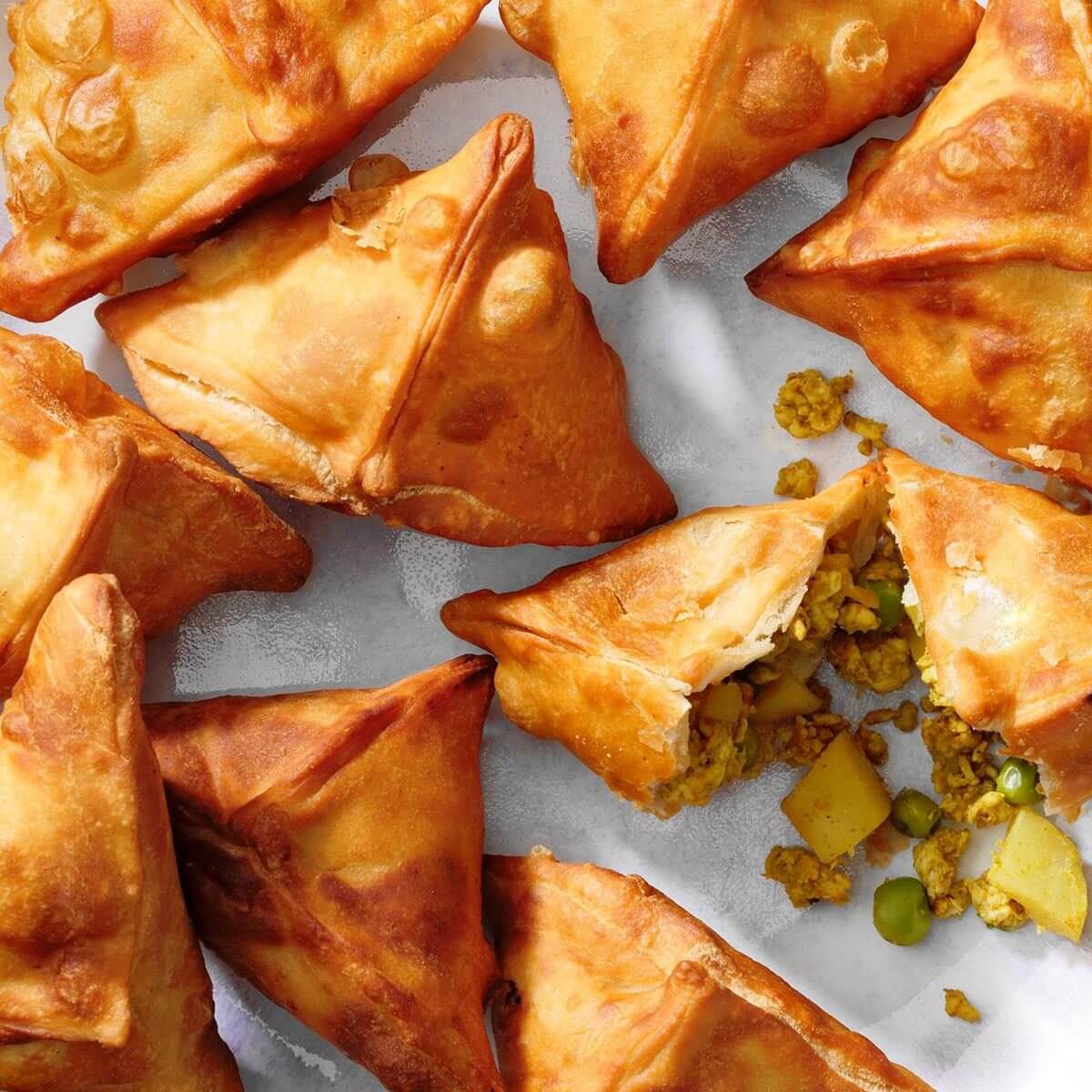
Kebab Paratha: Kebab Paratha features a flaky, crispy paratha filled with kebabs, typically seekh kebabs or minced meat patties, accompanied by chutneys and onions. It’s a satisfying and flavorful dish, marrying the richness of the paratha with the savory kebabs.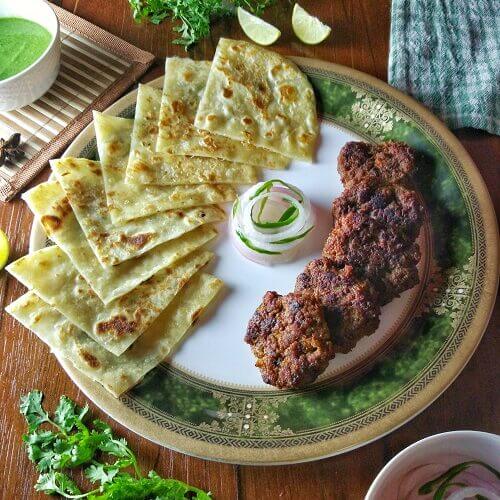
Paya Curry: Paya Curry comprises slow-cooked trotters (commonly goat or beef) in a flavorful curry made with a blend of spices, herbs, and tomatoes. The dish offers a unique texture due to the gelatinous richness of the trotters and is often enjoyed with naan or rice.
Daal Chawal: A staple comfort food, Daal Chawal is a simple yet satisfying dish consisting of lentils (daal) cooked to a creamy consistency, often tempered with aromatic spices like cumin, turmeric, and garlic. This flavorful lentil preparation is served alongside steamed rice (chawal), creating a wholesome and nutritious meal that’s popular across Pakistan. In Karachi, this dish embodies the essence of traditional Pakistani cuisine, much like its counterpart.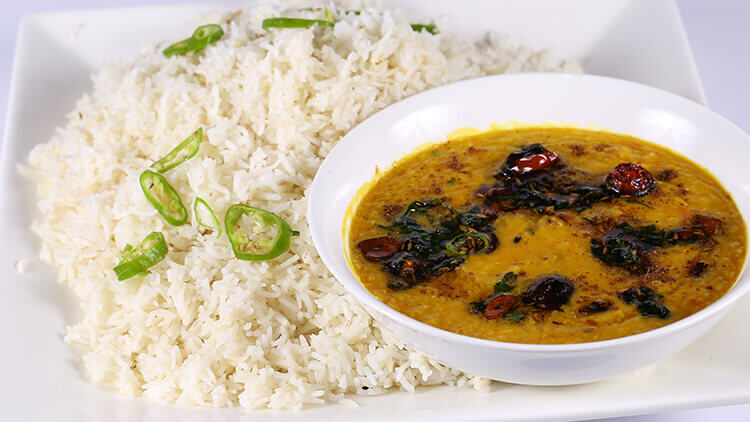
Chicken Handi: Chicken Handi is a delectable chicken curry cooked in a traditional vessel called a “handi.” The dish features tender pieces of chicken simmered in a rich and creamy gravy made from tomatoes, yogurt, ginger, garlic, and a blend of spices like coriander, cumin, and garam masala. This dish is a favorite among locals and visitors alike in Karachi, offering a burst of flavors reminiscent of the diverse food scene found in Karachi.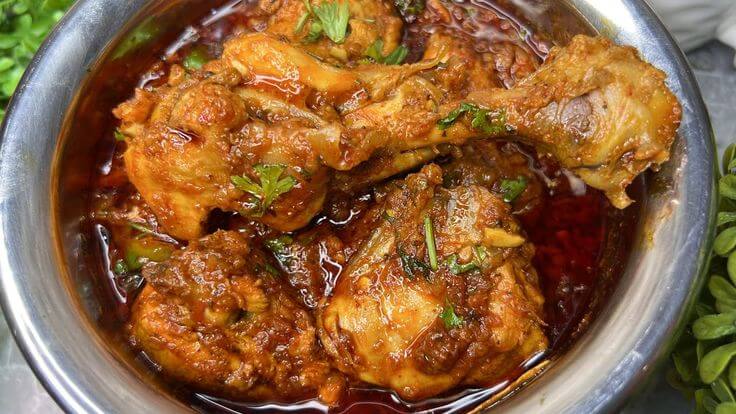
Qeema: Qeema refers to minced meat, often beef or mutton, cooked with onions, tomatoes, and an array of aromatic spices like red chili, turmeric, and coriander. This flavorful dish can be prepared dry or with a gravy base, making it a versatile option that pairs well with naan, rice, or parathas. Qeema is a beloved part of Pakistani cuisine, enjoyed in Karachi and across the country, reflecting the diverse culinary heritage found in Karachi.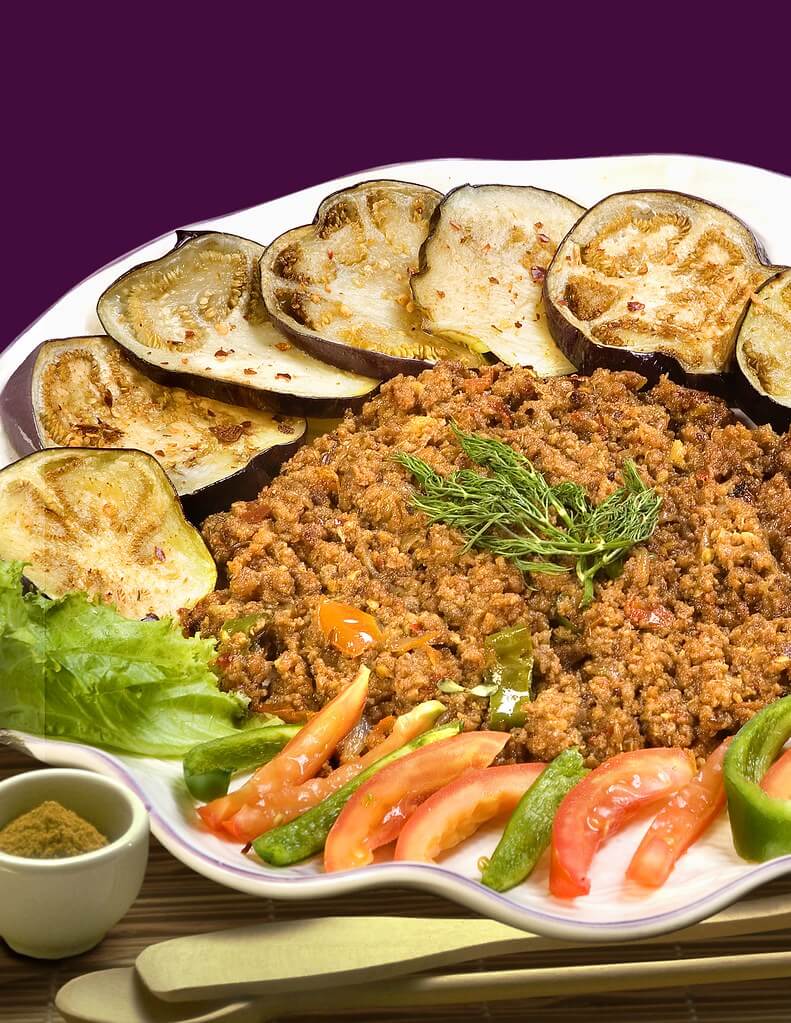
Tandoori Naan: Tandoori Naan is a traditional flatbread cooked in a tandoor, a cylindrical clay oven. Made from dough that includes flour, water, yeast, and sometimes yogurt, the naan is slapped onto the inner walls of the tandoor, resulting in a crispy exterior and a soft, chewy interior. This bread is a popular accompaniment to various dishes in Karachi, much like it is in the vibrant food culture of Karachi.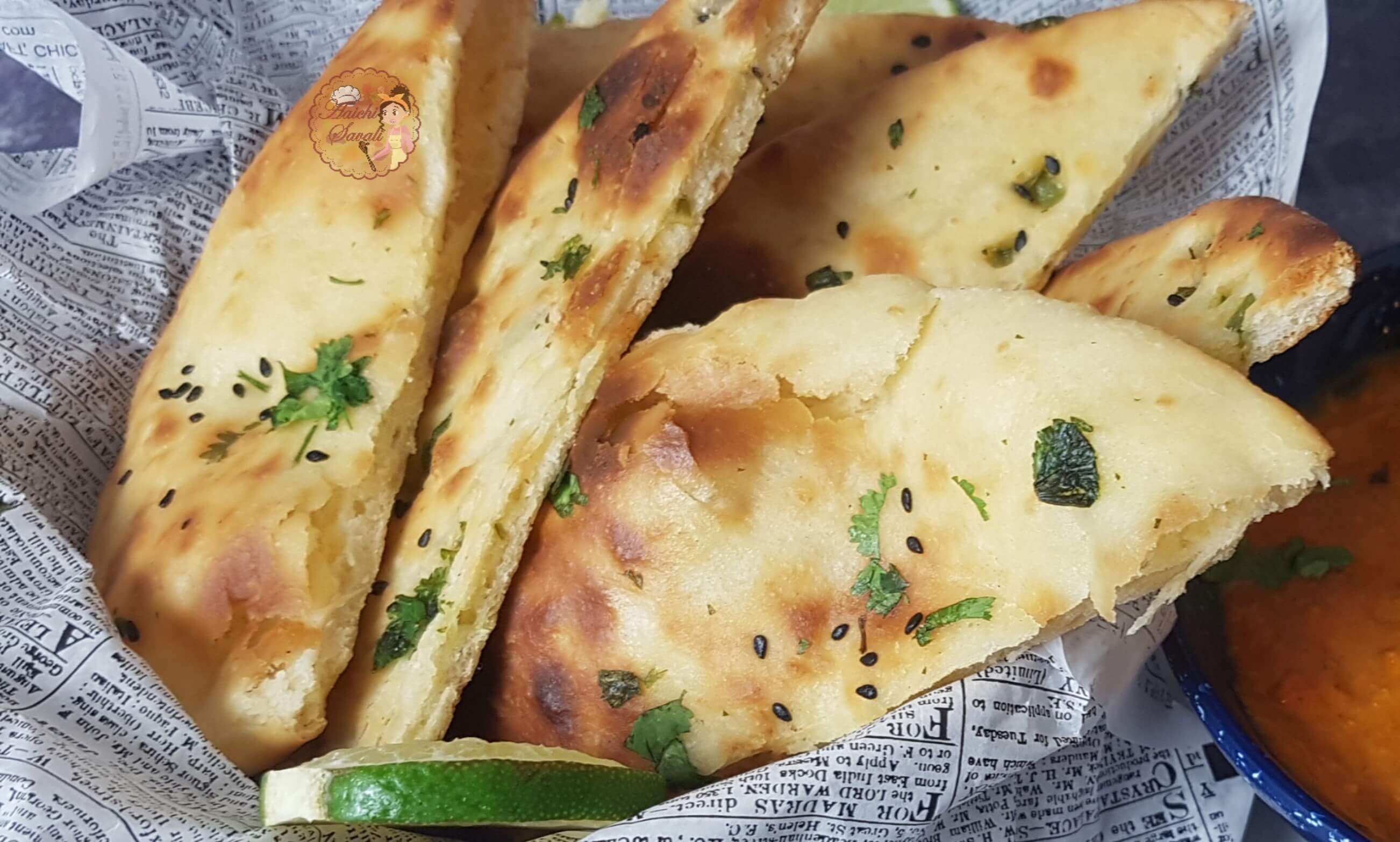
Karachi Street Food (Mixed varieties): It also boasts a diverse range of Karachi street food, featuring mixed varieties of flavorful and quick bites that include Bun Kababs, Gol Gappay, and other savory and sweet treats. These street food offerings are reminiscent of the bustling food streets found in Karachi, offering a blend of tastes and textures that cater to diverse palates.
Fish Fry: Karachi’s culinary scene includes Fish Fry, where fresh fish fillets are marinated in a blend of spices, coated in a crispy batter, and deep-fried until golden brown. This dish showcases the love for seafood and crispy delights, akin to the coastal food delights found in Karachi.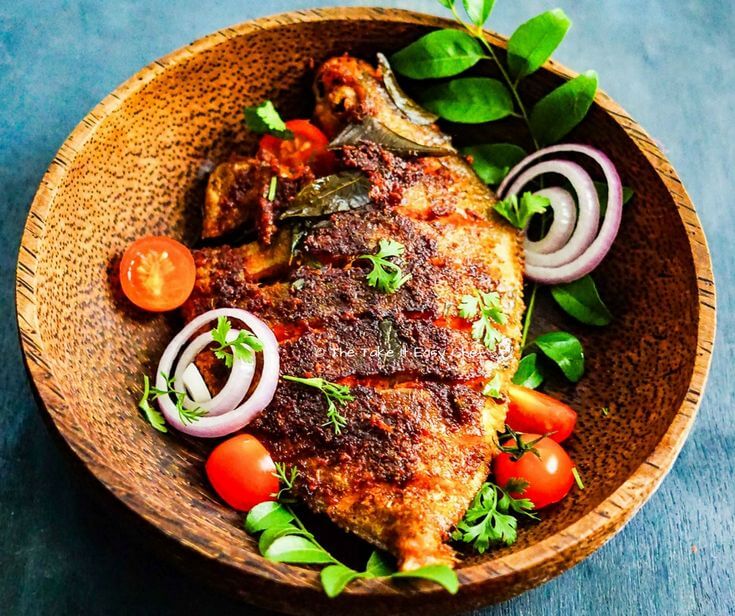
Chana Chaat: Chana Chaat is a tangy and spicy salad made from boiled chickpeas mixed with chopped tomatoes, onions, green chilies, and a medley of spices, topped with tamarind and mint chutneys. This refreshing and flavorsome dish is a popular snack across Karachi, resembling the vibrant street food scene of Karachi.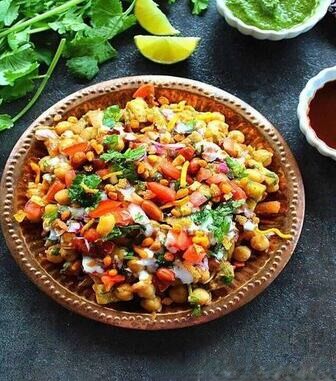
Malai Boti: Malai Boti features tender chunks of marinated chicken, typically cooked on a grill or skewers, imparting a smoky flavor. The marinade consists of cream (malai), yogurt, ginger-garlic paste, and various spices, resulting in succulent and aromatic chicken bites. This dish mirrors the love for grilled meats found in Karachi’s diverse culinary offerings.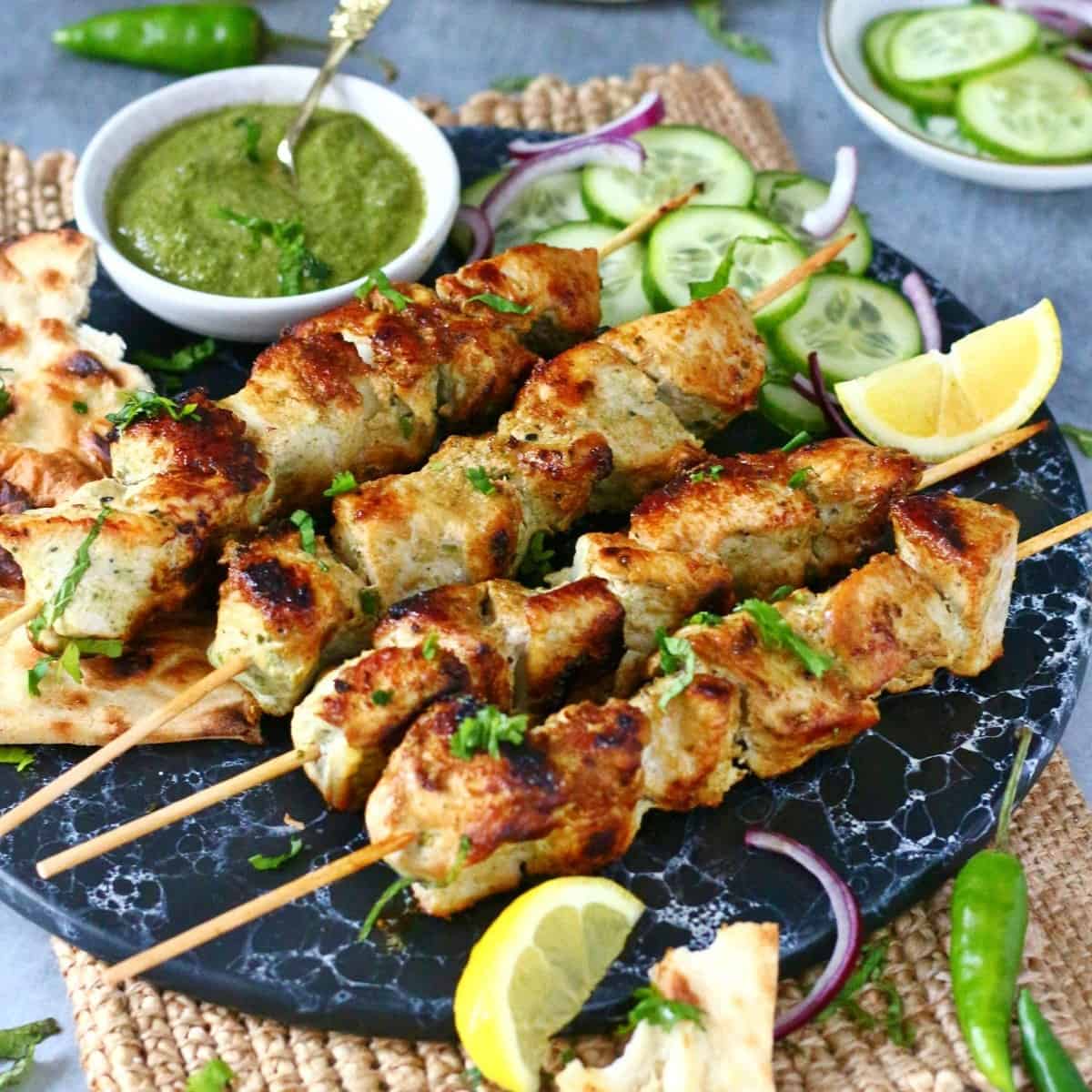
Anda Paratha: Anda Paratha comprises a flaky, layered paratha filled with a spiced egg mixture, creating a delightful and filling breakfast or snack option. The dish showcases the mastery of creating flavorful and satisfying parathas, much like those enjoyed as street food delights in Karachi.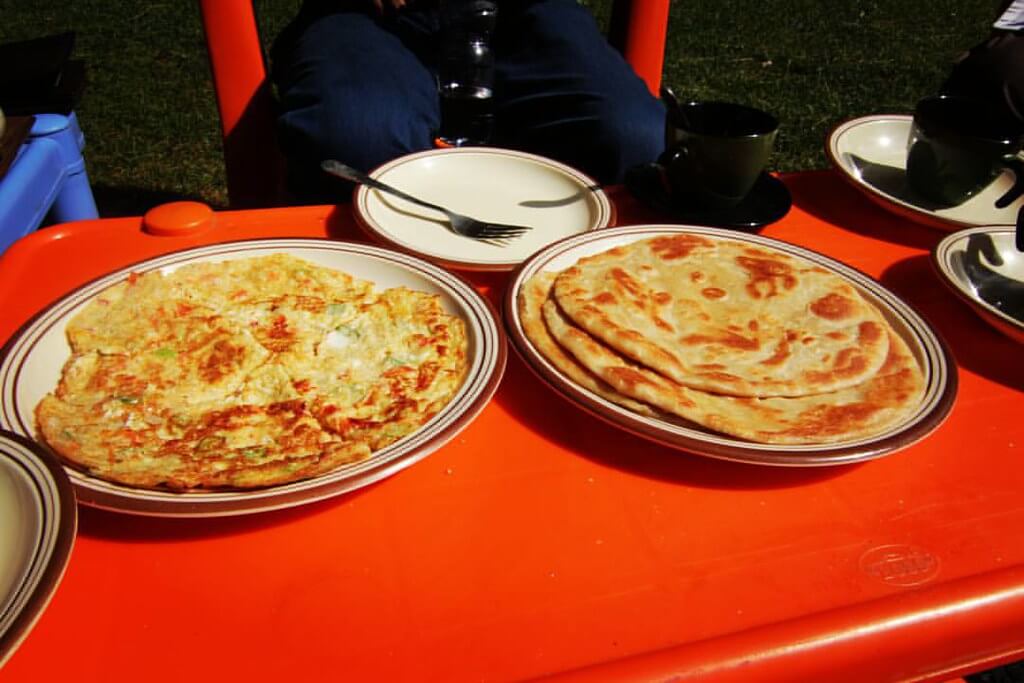
Gola Ganda (Shaved Ice): Gola Ganda is a refreshing summer treat featuring shaved ice flavored with colorful syrups, often topped with condensed milk, fruit chunks, and a variety of sweet toppings. This icy delight is a popular dessert in Karachi, providing a cooling respite similar to the shaved ice treats found in the bustling streets of Karachi.
Khichdi: Khichdi is a comforting one-pot dish made by cooking rice and lentils together with an assortment of spices and vegetables. This wholesome and nutritious meal is commonly enjoyed in Karachi, reflecting the simplicity and heartiness of traditional Pakistani cuisine, much like it is relished in the diverse food culture of Karachi.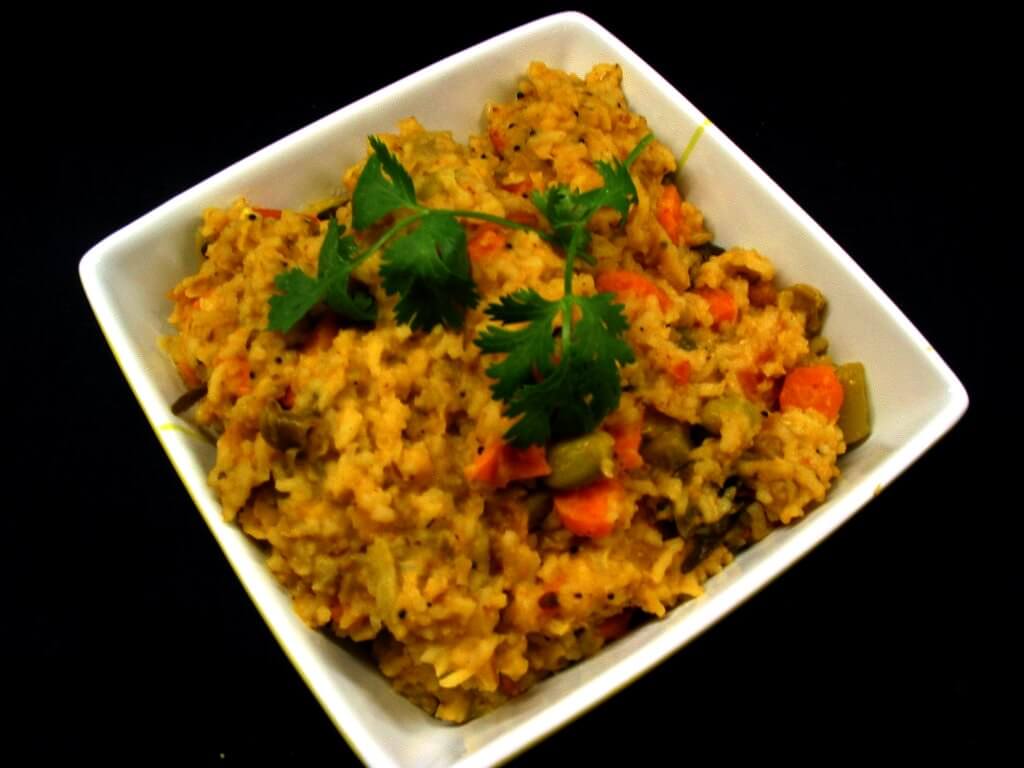
Chicken Tikkas: Chicken Tikkas are succulent pieces of marinated chicken skewered and grilled to perfection, resulting in smoky, tender bites bursting with flavors of spices like cumin, coriander, and red chili. This grilled delicacy is a popular appetizer or main course in Karachi, reminiscent of the delicious tandoori delights found in Karachi’s food streets.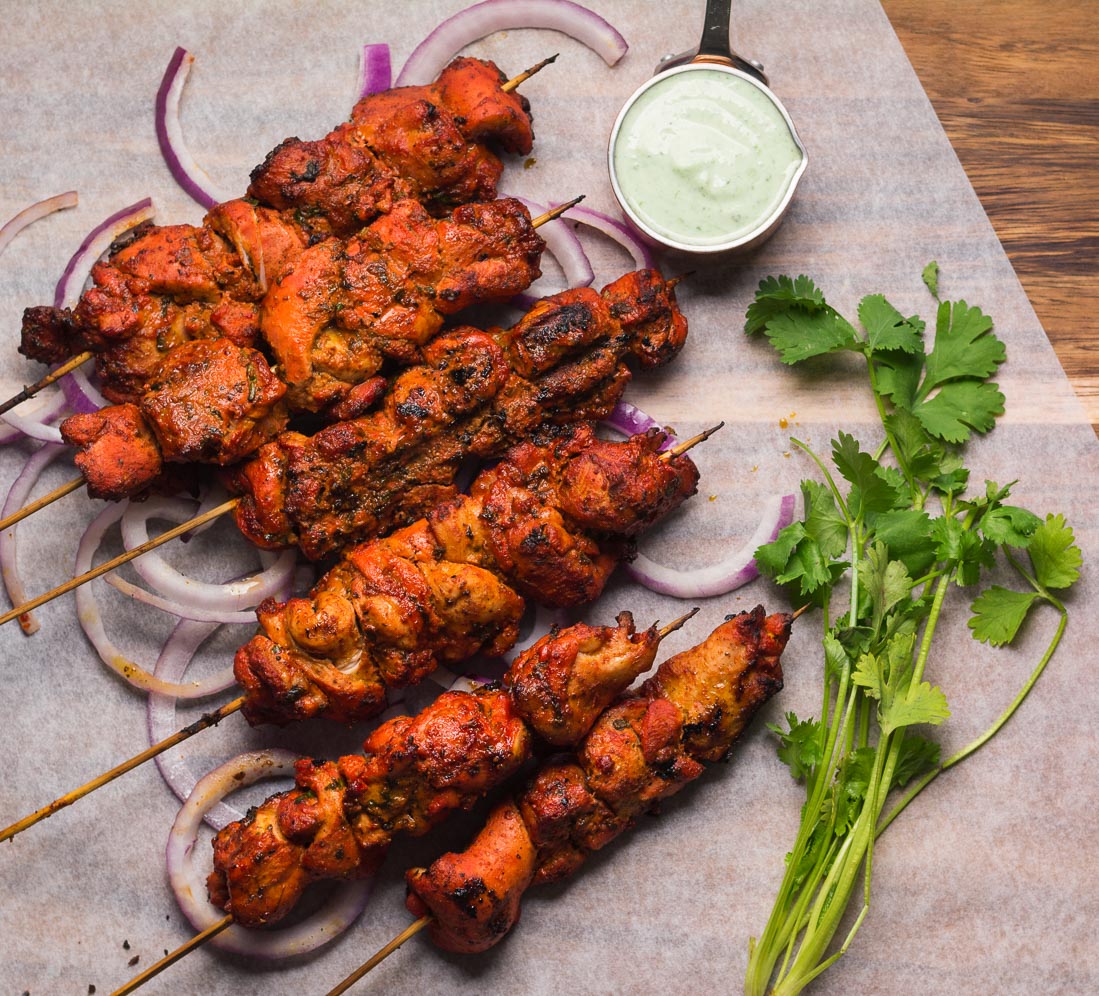
Aloo Chaat: Aloo Chaat consists of cubed or sliced boiled potatoes tossed with spices, onions, tomatoes, and tangy chutneys, creating a savory and flavorful snack. This popular street food item in Karachi reflects the love for tangy and spicy snacks found in Karachi’s bustling food scene.
Chicken Boti: Chicken Boti comprises marinated chunks of chicken skewered and grilled to perfection, showcasing the expertise in marinating and grilling meats that are beloved in Karachi, much like the flavorful kebabs found in Karachi’s food streets.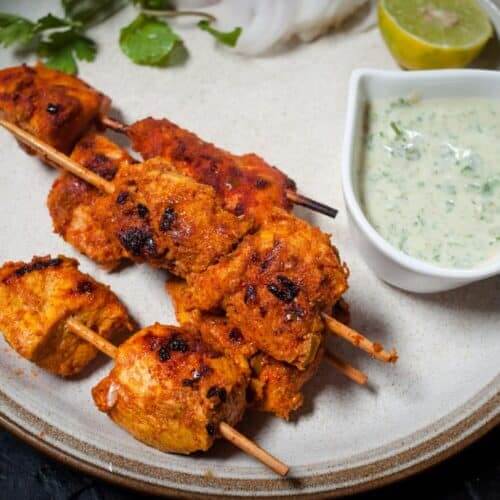
Gajar Ka Halwa: Gajar Ka Halwa is a traditional Pakistani dessert made from grated carrots cooked with ghee, milk, sugar, and nuts, resulting in a rich and indulgent sweet treat. This dessert holds a special place in Karachi’s culinary offerings, resonating with the love for traditional sweets found in the diverse food culture of Karachi.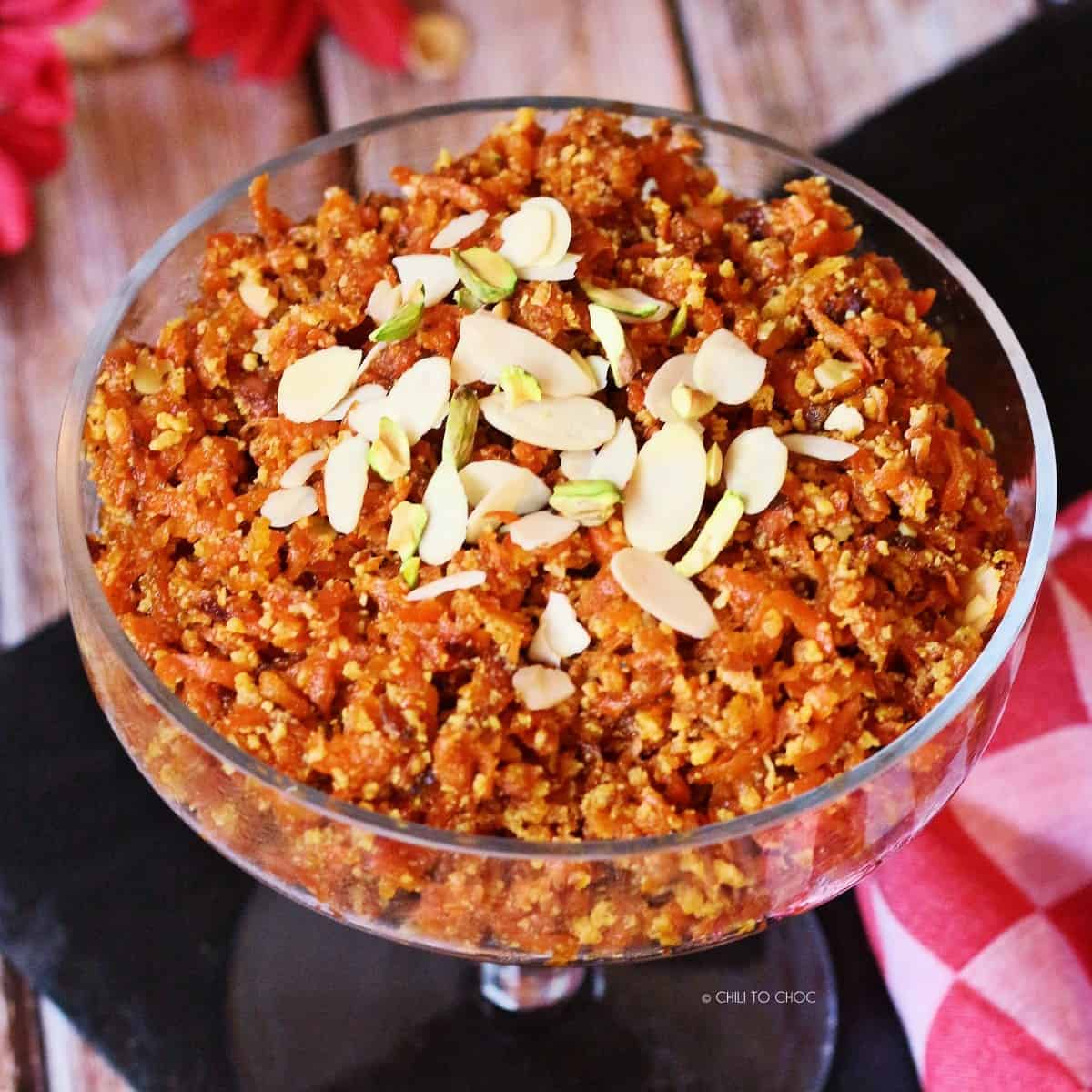
History and Culture
Karachi’s culinary journey is a tapestry woven with threads from diverse cultures, histories, and traditions, making it a vibrant reflection of Pakistan’s rich heritage.
Culinary Heritage
Overview of Culinary Influences The historical roots of “food in Karachi” trace back centuries, evolving through influences from various civilizations that traversed this port city. From the Mughals and the indigenous Sindhi cuisine to the flavors brought by immigrants and traders, Karachi’s culinary landscape is a canvas painted with myriad influences.
Origins of Key Dishes Delving into the origins of quintessential Karachi dishes like Biryani, Nihari, and Haleem unveils stories of migration, trade, and the amalgamation of flavors. The beloved Biryani, a fragrant rice dish layered with spices and meat, finds its roots in the Mughal era but has evolved into a local favorite with unique Karachi twists.
Cultural Significance
Food in Daily Life In Karachi, food isn’t merely sustenance; it’s a central pillar of daily life. From the aromatic morning chai to the late-night cravings for street-side delicacies, the city breathes and thrives on its diverse food offerings.
Celebrations and Festivals Food plays a pivotal role in Karachi’s celebrations and festivals, acting as a unifying force. Whether it’s the festive fervor of Eid-ul-Fitr with its sweet treats like sheer khurma or the vibrant colors and flavors of weddings and family gatherings, every occasion in Karachi is incomplete without an elaborate feast.
Fusion and Influences
Impact of Diverse Communities Karachi’s culinary canvas is painted with hues from various communities and ethnicities, each adding their unique flavors to the melting pot. From the aromatic spices of the Sindhi community to the rich Mughlai influences, and the fiery notes from Karachi’s Balochi cuisine, the city’s food scene is a celebration of diversity.
Cultural Blending and Adaptation The impact of diverse cultures is evident in the fusion dishes that have emerged over time, symbolizing unity in diversity. Karachi’s street food, a bustling hub of activity and flavors, beautifully encapsulates this fusion, offering a unique blend of tastes and textures.
Through the centuries, the “food in Karachi” has evolved, embracing influences, adapting to changing times, and becoming a vibrant tapestry that mirrors the city’s diverse cultural heritage.
Tips and Tricks
Best Time to Visit Eateries
Timing Matters Exploring the food in Karachi demands timing savvy. Early mornings for flavorful breakfasts, evenings for street food fervor, and late nights for iconic eateries – each moment presents a unique culinary experience. Dive into the flavors at their freshest and most vibrant by syncing your visits with the local dining rhythms.
Cooking Classes and Home Recipes
Unveiling Culinary Secrets For those eager to recreate the magic of Karachi’s cuisine at home, cooking classes and authentic recipes are the gateways. These classes offer a hands-on experience, unraveling the mysteries of spices and techniques integral to “food in Karachi.” Access to traditional recipes ensures a slice of Karachi in your own kitchen.
Food Tours and Guides
Guided Gastronomic Adventures Embark on guided food tours or opt for self-guided culinary exploration through Karachi’s alleys and eateries. Local guides provide insightful narratives, unraveling the stories behind each dish. These tours, whether organized or self-planned, promise a delightful journey through the heart and soul of Karachi’s food culture.
Ingredients that Define Karachi’s Cuisine
Essential Spices and Condiments
Aromatic Marvels The “food in Karachi” owes its irresistible flavors to an array of spices. Dive into the world of aromatic wonders – from the warmth of cinnamon and cardamom to the earthy essence of cumin and coriander. Each spice carries a story, infusing every dish with character and depth.
Unique Produce and Ingredients
Local Bounty Karachi’s cuisine is enriched by its locally sourced or unique ingredients. Explore the vibrant markets and discover treasures like fresh seafood from the Arabian Sea, aromatic herbs, and indigenous produce that add distinctiveness to the dishes. These ingredients are the soul of Karachi’s culinary identity.
Sustainability and Local Sourcing
Importance of Sustainability
Nurturing the Culinary Legacy In the bustling landscape of “food in Karachi,” sustainability has emerged as a crucial factor. Recognizing the significance of preserving culinary traditions, sustainability advocates for responsible sourcing, ensuring that the rich tapestry of flavors remains for generations. It’s not just about nurturing the environment but safeguarding the heritage intertwined with the city’s gastronomy.
Embracing Sustainable Practices
Restaurants and Markets Leading the Way Several eateries and markets in Karachi have embraced sustainable practices, championing local sourcing and ethical methods. These establishments prioritize sourcing ingredients from local farmers and artisans, reducing the carbon footprint while supporting the local economy. From farm-to-table restaurants to markets showcasing locally grown produce, they echo the ethos of sustainability in “food in Karachi.”
Commitment to Community and Environment
Beyond Culinary Excellence The movement towards sustainability goes beyond culinary excellence; it’s a commitment to the community and the environment. By supporting local farmers and artisans, these initiatives contribute to the livelihoods of communities while promoting biodiversity and reducing transportation-related emissions. It’s a conscious effort to harmonize gastronomic pleasure with ecological responsibility.
Preserving Flavorful Legacies
Securing the Future of Karachi’s Cuisine Sustainability in the realm of “food in Karachi” isn’t just a trend; it’s an imperative for safeguarding the diverse flavors and culinary legacies that define the city. By advocating for sustainable practices, Karachi’s food scene seeks to ensure that the authenticity and richness of its cuisine endure, allowing future generations to savor the same flavors that have shaped its cultural identity.
Cultural Significance
Food as a Cultural Emblem
Culinary Tapestry of Values Food in Karachi isn’t merely sustenance; it’s a cultural emblem woven into the city’s ethos, reflecting values, traditions, and the collective identity of its people. The culinary landscape mirrors the vibrant tapestry of Karachi’s multicultural fabric, embracing diverse influences while preserving age-old traditions.
Reflection of Values and Beliefs
Communal Bonding and Hospitality Food in Karachi isn’t just about flavors; it’s a medium for communal bonding and hospitality deeply ingrained in the local culture. Sharing a meal is a ritual that transcends boundaries, fostering connections and nurturing relationships. The emphasis on hospitality echoes the values of warmth and generosity cherished by the people of Karachi.
Festivities and Rituals
Celebratory Feasts In celebrations and rituals, “food in Karachi” assumes a central role, symbolizing joy, prosperity, and togetherness. From lavish feasts during weddings to communal gatherings during religious festivals like Eid, the diversity of dishes represents unity and harmony amidst cultural diversity.
Heritage and Identity
Preserving Culinary Heritage Karachi’s food culture embodies the heritage and identity of its inhabitants. Traditional recipes passed down through generations, each with its unique blend of spices and flavors, serve as a repository of cultural legacy. These recipes are not just meals; they are heirlooms preserving the essence of Karachi’s history.
Social Cohesion
Unifying Force Food acts as a unifying force, transcending differences of language, religion, and ethnicity. Street-side eateries and bustling food markets in Karachi are melting pots where individuals from diverse backgrounds converge, creating an environment of inclusion and harmony.In essence, “food in Karachi” goes beyond being a source of nourishment; it’s a cultural symbol, a narrative of values, and beliefs, and a testament to the city’s rich heritage and inclusive spirit.
Conclusion
Karachi’s culinary landscape is a vibrant mosaic, reflecting the city’s rich heritage, diverse cultures, and a myriad of flavors that dance on taste buds. From the aromatic biryanis to the sizzling street-side delights, “food in Karachi” is a cultural symphony, that invites exploration and celebration.
As you delve into Karachi’s bustling streets and kitchens, immerse yourself in the tantalizing aromas and flavors that paint a vivid picture of the city’s identity. Each dish carries a story, a blend of history, traditions, and the warmth of the people. We encourage you to embark on this culinary voyage, embracing the city’s culinary diversity and savoring every bite as an experience in itself.
The significance of food in shaping Karachi’s identity goes beyond the palate; it’s a reflection of the city’s inclusivity, hospitality, and unity amidst diversity. So, let the flavors of Karachi awaken your senses, and may each meal be a tribute to the city’s vibrant cultural tapestry and its unwavering love affair with “food in Karachi.” Explore, taste, and cherish the unique flavors that define Karachi’s culinary soul.


